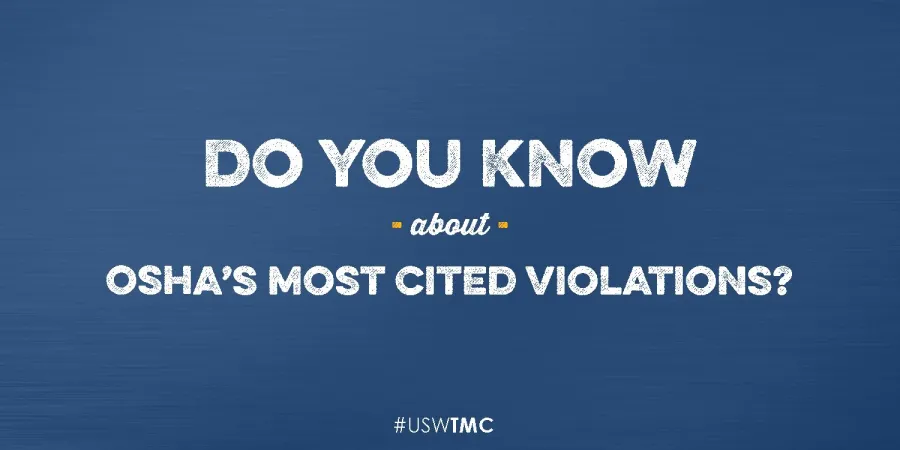OSHA’s 2022 Most Cited Violations

To ensure the safety & health of workers, OSHA conducts inspections to identify hazards in the workplace. This post outlines the top 10 most frequently cited OSHA violations for 2022.
Unfortunately, injuries, illnesses and fatalities in the workplace occur every single day in the United States. According to the U.S. Bureau of Labor Statistics, there were 5,190 workplace fatalities in 2021. This is an 8.9 percent increase from 2020.
The Occupational Safety and Health Administration (OSHA) conducts inspections to identify hazards in the workplace. However, OSHA inspectors are unable to go into every workplace. If an OSHA inspector does go into a workplace and finds something which violates an OSHA regulation, a citation will be given to the employer for each violation. The employer must post the OSHA citation(s) at or near the work area involved and leave it posted until the violation(s) has been rectified.
OSHA compiles data on frequently cited workplace violations each year and publishes this list with the hopes of bringing to light the most common and dangerous workplace hazards. The top 10 most frequently cited OSHA violations for the 2022 fiscal year include:
- Fall Protection: 5,260 violations
- Hazard Communication: 2,424 violations
- Respiratory Protection: 2,185 violations
- Ladders: 2,143 violations
- Scaffolding: 2,058 violations
- Lockout/Tagout: 1,977 violations
- Powered Industrial Trucks: 1,749 violations
- Fall Protection Training: 1,556 violations
- Eye and Face Protection: 1,401
- Machine Guarding: 1,370
For the 12th year in a row, fall protection has been at the top of the OSHA Most Cited Violations list. Improper fall protection has also been the leading cause of occupational injuries for 10 consecutive years. Raising awareness on common workplace violations can help workers identify hazards within their own workplaces and may provide them the information necessary to report these hazards. In addition, employers should use this list to evaluate their own workplace.
KNOW YOUR RIGHTS! Your employer is required to provide a workplace free from serious recognized hazards and comply with standards, rules and regulations issued under the OSH Act. Workers have the right to report unsafe and hazardous conditions in the workplace. Remember to document unsafe or hazardous conditions that you see or report.